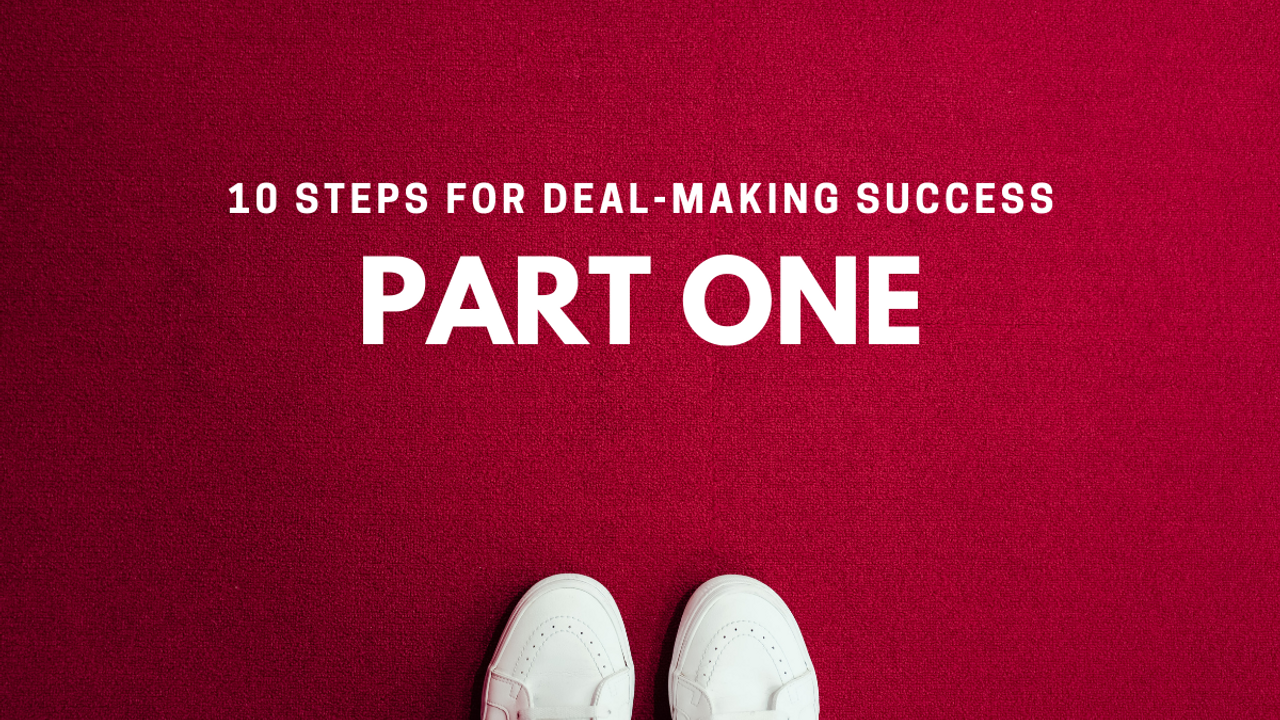Deal Preparation: 5 Steps Towards Success
Dec 17, 2021
When I do whiteboard sessions with my deal-making clients, I frequently cover 10 specific steps that help us move towards success. This process is especially key for those who want to be part of ongoing deals. As I’ve seen, the more deals you have going on, the more important it becomes to be strategic and follow a process that works for you. Ready to uplevel your own deal preparation? Listen in to the whole episode, or read on below!
(I’ll cover the first 5 steps today. Stay tuned for my next solocast to get the other 5!)
1. Know Why You’re Making the Deal
Before you get in too deep with any deal, it’s essential that you have a fundamental understanding of why you want to pursue this deal. Is this about growth? Diversification? Furthering your purpose? Positioning yourself for further acquisitions?
The reality is, some of us are motivated to enter into deals for all the wrong reasons. I’ve watched people make deals that increase revenue while actually reducing profit. Some deals are driven by ego rather than anything truly meaningful. As much as I love deals and am a huge proponent of them, I think we have to understand that they aren’t always the best idea.
Finally, when you understand your why, you can communicate that with your partners and other stakeholders. That includes lawyers or negotiators, like me, that are involved in the deal.
2. Who Are You Targeting?
If you’re doing multiple deals, you need to have a target in mind. A haphazard search or method for connecting just won’t cut it, especially if you’re serious about making deals a sustainable part of your future.
Who are you looking for? What are your criteria for your potential targets? What are you trying to add to your business?
Whether you’re looking for acquisitions or affiliates (or something else altogether), it’s key that you take the initiative to understand who they are. In addition, you should understand how that pertains to your why.
3. Build Your Value Proposition
We’re all used to differentiating ourselves from the competition in order to generate sales or gain traction. However, we don’t always think about creating a value proposition for our deals. Doing so makes sense, though!
If you know your why, and you know who you’re targeting, you should be able to communicate why doing the deal holds value for them. What makes it worth their time? Why is this going to be in their best interest?
Just being “nice” people, or having a great company, doesn’t cut it here! Also, the deal structure or model is not the value proposition. (Those things are what you create to deliver on the value prop itself.)
So, what’s the value? Why is this deal, be it an acquisition, affiliation, joint venture, or something else, worth bringing these particular parties to the table? When you’re clear about this, you’re able to both qualify amazing partnerships and disqualify those who won’t be a great fit.
4. Get the Right Resources in Place
Before you create your deal model and choose a structure, you need to identify and get in place the correct resources. This can include internal resources, human talent or skills, capital, systems or processes, information needed, and relationships with 3rd parties. I encourage clients to do a resource map to tangible write down what is already in place as well as what is needed.
In order to be fully prepared for a deal, you need to know what you have and what you need.
5. Choose a Deal Model
First off, deal models and deal structure are not the same. (I’ll kick off the next solocast with more on the distinctions between the two!)
Your deal model is how you’re going to do these deals. For example, in a licensing deal, you may have an exclusive or a non-exclusive model. Within those categories, there are more you can break the deal down into. From expectations around the number of deals sold, to clarifications on geographical boundaries, these factors are part of the deal’s model.
The goal here is not to create a “menu” with a bunch of listings. Rather, the goal is to develop a model that keeps things consistent, scalable, and usable as you grow. The more deals you do, the more important it becomes to have clarity around your own deal models.
As you build your model, you can take into account your why, who you’re targeting, and what your value proposition is. In addition, it will be based on what resources you have in place. The model ties all of these elements together and sets you up for deal-making success!
If you just do 1-5, you’re on your way towards becoming an excellent deal-maker! Stay tuned for 6-10, where I’ll deliver more on structure.
Corey Kupfer is an expert strategist, negotiator and dealmaker. He has more than 35 years of professional deal-making and negotiating experience. Corey is a successful entrepreneur, attorney, consultant, author and professional speaker. He is deeply passionate about deal-driven growth. He is also the creator and host of the DealQuest Podcast.
If you want to find out how deal-ready you are, take the Deal- Ready Assessment today!


